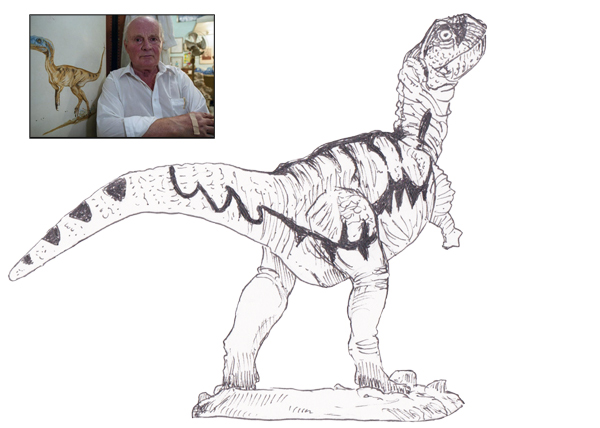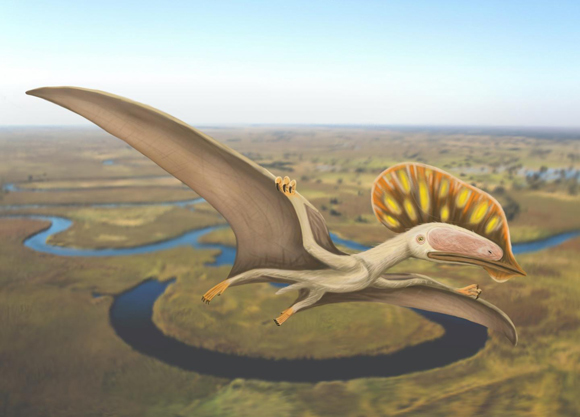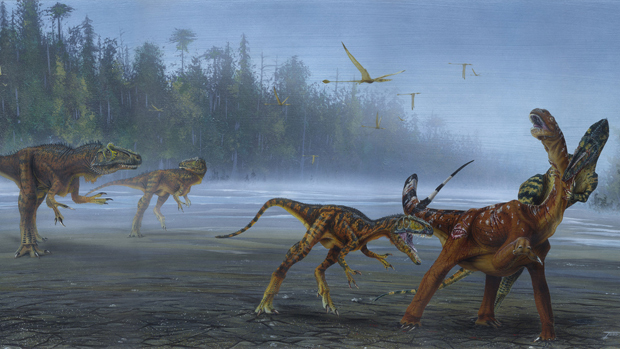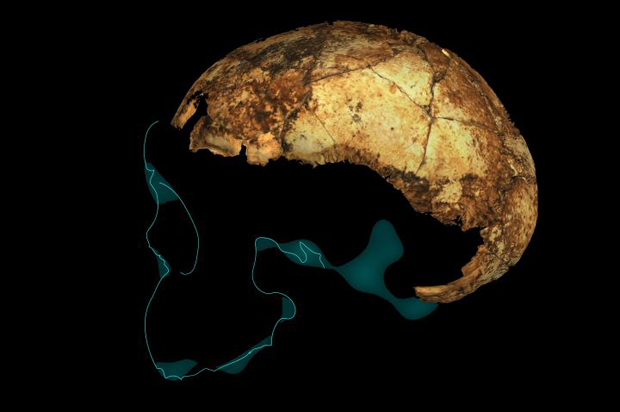Favourite Blog Posts of 2020 (Part 1)
At Everything Dinosaur, we try and post up an article on this blog site every single day. This can be quite a challenge considering all our other activities and projects. However, as a result of our work on this weblog we have managed to compile a huge amount of information, articles and features chronicling (for the most part), advances in the Earth sciences and new fossil discoveries along with research into the Dinosauria.
This year, Everything Dinosaur’s blog has passed the 5,000 articles benchmark. Here is a selection of our own favourite news stories that we have covered in the first six months of 2020 (January to June).
January – A New Allosaurus Taxon
In January, a new species of North American Allosaurus was added to the pantheon of dinosaurs known from the famous Morrison Formation of the western United States. Allosaurus jimmadseni honours the sadly departed James H. Madsen Jr. Utah’s inaugural state palaeontologist. The famous Allosaurus specimen MOR 693 “Big Al” was reassigned to this new species.
A Pack of Allosaurus (A. jimmadseni) Attack a Luckless Juvenile Sauropod
Picture credit: Todd Marshall
The January Allosaurus article: A New Species of Allosaurus.
February – The “Father of Argentinian Palaeontology” – José Bonaparte
On the 18th February José Bonaparte, regarded by many as the most influential vertebrate palaeontologist of the 20th century passed away. Respected and admired, José helped to develop and train a whole new generation of Earth scientists. He was also responsible for naming and describing a large number of new dinosaurs including Abelisaurus, hence our illustration of that South American theropod (below).
José Bonaparte and a Drawing of One of the Many Dinosaurs He Named and Described (Abelisaurus comahuensis)

José Bonaparte (inset) and a drawing of one of the dinosaurs he named in his long and distinguished career Abelisaurus (A. comahuensis).
Picture credit: Télam/Everything Dinosaur
To read more about José Bonaparte: José Bonaparte – The Founding Father of Palaeontology in Argentina.
March – Telling the Time Back in the Cretaceous
As the COVID-19 pandemic took hold, team members at Everything Dinosaur were distracted by some remarkable research undertaken by scientists from the University of Ghent and the Vrije Universiteit Brussel.
A study of the growth rings preserved on the fossilised shells of Cretaceous bivalves permitted the researchers to calculate that 70 million years ago, the day length was approximately thirty minutes shorter and a year on Earth was around a week longer than it is today.
To read this article: Telling the Time Back in the Cretaceous.
April – Homo erectus at Home in Africa
The remarkable Drimolen fossil hominin site in South Africa, provided palaeoanthropologists with likely confirmation that the hominin H. erectus did indeed evolve in Africa and not Asia. A carefully and painstakingly reconstructed fossil skull (DNH 134), found in this area – regarded as the “Cradle of Humankind”, suggests that Homo erectus existed some 100,000 to 200,000 years earlier than previously realised.
We still have a lot to learn about our own evolution.
Homo erectus Evolved in Africa
Picture credit: La Trobe University (Australia)
To learn more about the origins of Homo erectus: H. erectus Originated in Africa.
May – Lots of Pterosaurs
A jawbone found on the Isle of Wight was identified as a new species of tapejarid pterosaur. The flying reptile, named Wightia declivirostris which translates as “slanting beak from the Isle of Wight” was one of several new pterosaur species described in 2020.
A Life Reconstruction of the Early Cretaceous Pterosaur Wightia declivirostris

A life reconstruction of the newly described tapejarid from the Lower Cretaceous of the Isle of Wight (Wightia declivirostris).
Picture credit: Megan Jacobs (University of Portsmouth)
To read more about Wightia declivirostris: A New Terrific Tapejarid.
We have a lot more to learn about the Pterosauria too.
For models and replicas of pterosaurs and other prehistoric animals: Wild Safari Prehistoric World Figures.
June – Fossilised Stick – Provides a Surprise
A fossil discovered more than fifty years ago and regarded as little more than a “fossilised stick” has proved to be a new species of Late Devonian plant and it will help scientists to better understand the flora of the ancient landmass of Gondwana.
The specimen was found by amateur geologist John Irving whilst exploring the banks of the Manilla River in Barraba (New South Wales, Australia). A study in the open-access journal PeerJ identifies the newly named Keraphyton mawsoniae and proposes that it has a similar structure to primitive horsetails and ferns. The fossil which looks so unremarkable on the outside, once studied in cross-section, has provided a unique window into the plant life on Earth around 360 million years ago.
Not Much to Look at on the Outside but Inside a Treasure Trove of Information for Palaeobotanists

The newly described Keraphyton mawsoniae a fern-like land plant from the Late Devonian of Australia.
Picture credit: Champreux et al (PeerJ)
To read more about K. mawsoniae: Fossil Stick Proves to be New Species of Ancient Plant.
This selection represents some of our favourite blog posts from the first six months of 2020, which one is your favourite post?
We will conclude this review of the news stories we have covered on this blog in part 2.
In the meantime, visit the Everything Dinosaur website: Everything Dinosaur.








Leave A Comment